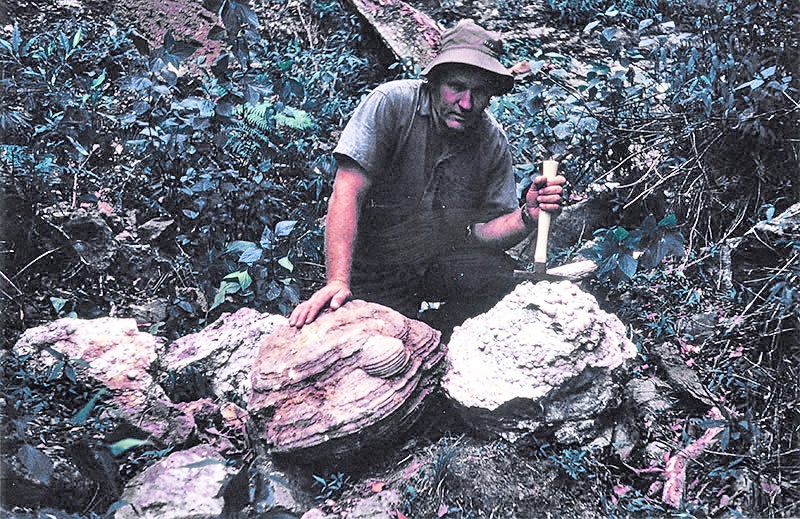Fossicking in the Tweed
 Barry Waters with large thunder eggs at Doon Doon, 1969
Barry Waters with large thunder eggs at Doon Doon, 1969The Tweed has been a hot spot of fossickers Australia wide due to the large amounts of chalcedony, agate, and jasper found in streams in the area.
Fossicking is the small scale search for minerals, gemstones or mineral bearing material from the surface (or by digging from the surface) with hand-held implements.
The fun activity does not need a special license provided it is non-commercial, however there are some rules to follow.
Barry Waters
At TRM Murwillumbah, you can see specimens collected in the Tweed by Barry Waters. Barry starting fossicking by picking up interesting looking stones as a child in the creek at Currumbin.
In the late 1950s Barry became more dedicated to collecting geological specimens after his brother showed him an American lapidary journal. His renewed interest was aided by his job driving excavators in the creek at Currumbin and unearthing large stones.
Barry’s first fossicking trip in the Tweed was to Doon Doon to look for thunder eggs. With some friends he gained permission from a local farmer to access the bottom of a creek, then trecked through thick rainforest to reach the thunder eggs.
He was a founding member of the Gold Coast Lapidary Club in 1965 and later the Beenleigh Gem Club of which he was the first President. He is also a talented faceter and polisher, winning numerous prizes in national and international competitions.
As a general rule, fossicking in accordance with the legislation can take place on any land, provided that permission is obtained from the landowner or land manager, except in National Parks.